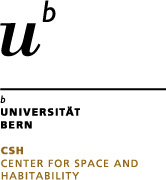Instrumentation
The SenseLife project used for its feasibility study an instrument baseline based on TreePol (Patty et al. 2017) developed at Leiden University. In 2019, we modified the TreePol concept into FlyPol, which became the airborne version of the instrument. FlyPol includes several improvements over TreePol to improve overall stability.
The picture below shows the initial TreePol instrumental design as detailed in Patty et al. (2017).

In 2022 our team started developing FlyPol+, which includes, in addition to TreePol/FlyPol, linear polarisation capability and uses a super-achromatic quarter-wave plate in lieu of the Fresnel rhomb as retarder. This instrument will be the version used for our next field and flight campaigns.
As of January 2025, we have two FlyPol+ instruments in use, deployed both in the field and in our laboratory facilities in Bern and Neuchâtel. To advance our investigation of polarization signatures from astrobiologically significant microbes that utilize bacteriochlorophylls, we are developing a new version of FlyPol designed to operate in the far-red to near-infrared spectral range. This enhanced version, named FlyPol Red, incorporates a Wollaston prism as a beam splitter to expand our spectral detection capabilities.
